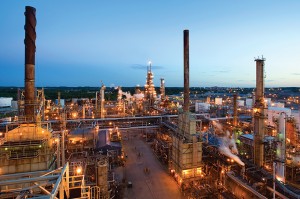Adhering to added hydrotreater unit maintenance work scopes requires resources and diligence for tracking and reviewing to ensure that the equipment under scrutiny is inspected by operations personnel. This takes into account scheduled work and extra work that should be listed and checked off for proper line-up.
Concerns with hydrotreater safety and reliability are increasing as more units come on line and are operating across a wider range of operating parameters, including higher H2 partial pressures and higher temperatures towards end-of-run (EOR). Cognizance of maintenance and operations procedures with these constantly modified units must involve plant operations and health/safety personnel to develop an operational mechanical integrity checklist to ensure that all mechanical equipment components are addressed.
While no two gas oil hydrotreaters are alike, many of these procedures and checklists have evolved from experience with operating hydrotreaters against a wide envelope of operating conditions and process objectives (e.g., FCCU feed pretreatment, LCO upgrading to ULSD, etc.). For example, at one refinery, a hydrogen leak occurred from a one-inch gate valve on a makeup gas line in a gas oil hydrotreater.
When the leak was discovered, the gas oil hydrotreater unit shutdown procedures were immediately implemented and emergency response was requested. The gas oil hydrotreater unit was fully shut down after about 30 minutes. Shutdown consisted of sufficiently depressurizing the unit and adding nitrogen to allow safe closing of the leaking one-inch gate valve and installation of the associated missing bull plug.
During this event, the one-inch gate valve was found to be open roughly 10% with no bull plug in the valve, allowing the hydrogen to leak to the atmosphere.
The hydrotreater involved in this incident had been re-commissioned 18 months earlier after a company ownership change occurred and had undergone recent maintenance and testing prior to activation for operation. A post-event investigation determined the likely cause of the hydrogen leak was that the one-inch gate valve was not completely closed prior to the start of operation. The investigation determined that a possible scenario for the loss of the valve bull plug was expansion and contraction during hot and cold cycling of the unit combined with vibration from a nearby reciprocal compressor over the 18 months since re-commissioning.
Processing unconventional hydrocarbons through the newest hydrotreaters requires more hydrogen, higher conversion temperatures and higher overall unit (and plant) complexity to yield clean transportation fuels at the other end. In between the front end and back end of the plant, higher amounts of corrosion and fouling are to be expected with the types of crudes that are being added to the refinery crude diet, such as the higher percentages of heavy Canadian crudes being processed by Midwestern refiners in the U.S.
It therefore stands to reason that oil companies will be compelled to increase their downstream capital and operating budgets to accommodate whatever types of low quality crudes that they can get. Looking at budget outlays of refiners that that many of us have access to, it looks like 2016 looks to be neither a bumper year, nor one of drought, in terms of downstream capital expenditures for adding process complexity to refinery operations.








Leave a Reply
You must be logged in to post a comment.